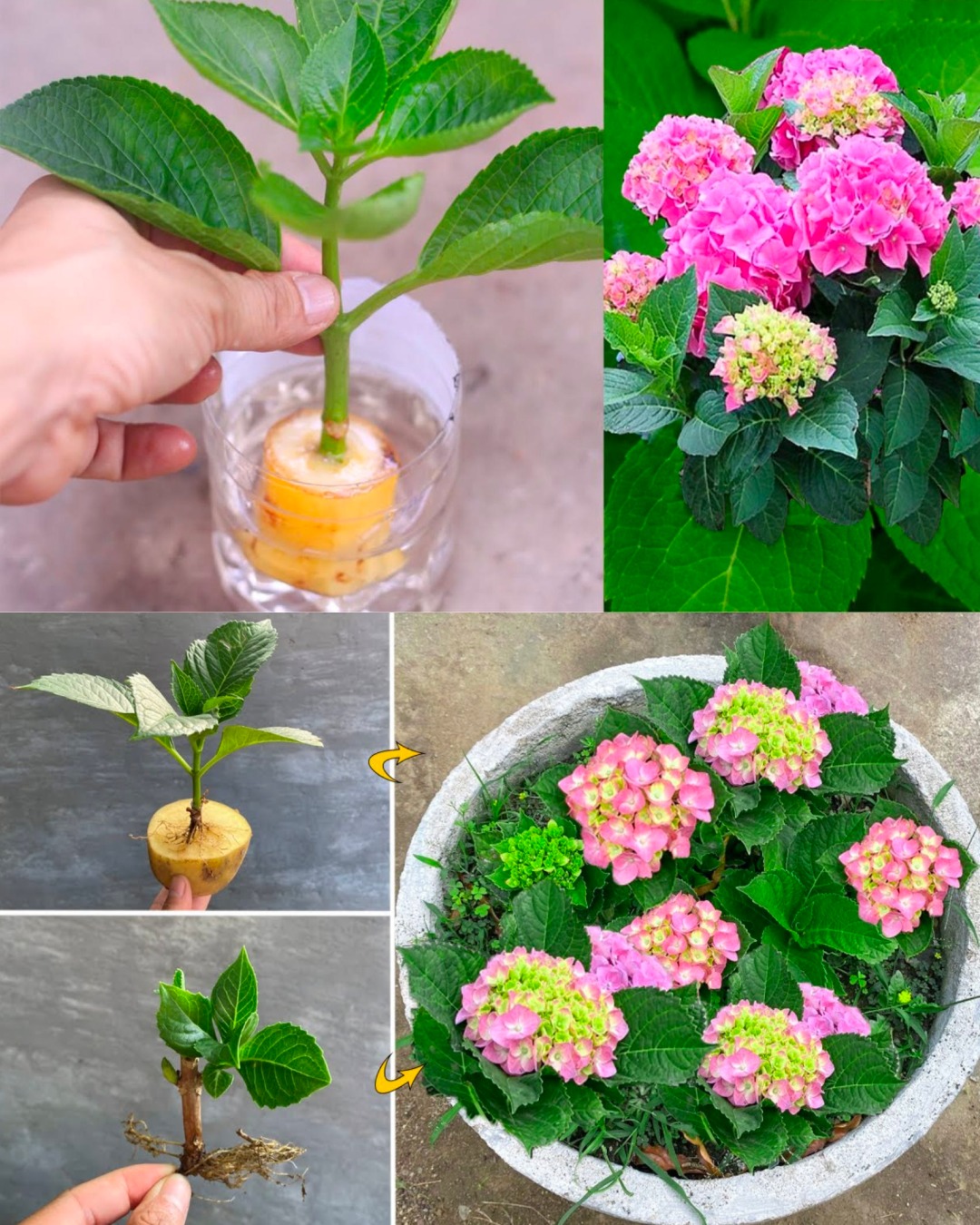Hydrangeas, with their lush blooms and vibrant colors, are a favorite among gardeners. While purchasing mature plants can be costly, propagating hydrangeas from stem cuttings offers a budget-friendly and rewarding alternative. This comprehensive guide will walk you through the process, ensuring you can cultivate these stunning shrubs in your own garden.
Why Propagate Hydrangeas from Cuttings?
Propagating hydrangeas from stem cuttings is not only economical but also allows you to clone a plant with desirable traits. This method ensures the new plant retains the characteristics of the parent, such as bloom color and size. Moreover, hydrangeas root relatively easily, making them ideal candidates for propagation.
Best Time to Take Cuttings
The optimal time to take hydrangea cuttings is during the late spring to early summer when the plant is actively growing. During this period, the stems are in the “softwood” stage—flexible yet mature enough to root successfully. Softwood cuttings tend to root more quickly and with higher success rates compared to hardwood cuttings taken in late fall or winter. sheeninskii.blogspot.com+1Google Cloud Storage+1Empress of DirtGardenTech.com+1Empress of Dirt+1
Materials Needed
Before you begin, gather the following supplies:
- Sharp, clean pruning shears or scissors
- Rooting hormone (optional but recommended)
- Small pots or containers with drainage holes
- Seed-starting potting mix or a blend of perlite and peat moss
- Clear plastic bags or a propagator to maintain humidity
- Labels and a marker to identify your cuttingsexyuuybtf.blob.core.windows.net+15GardenTech.com+15Empress of Dirt+15Gardening Know How+12Reddit+12Real Simple+12Real Simple
Step-by-Step Guide to Propagating Hydrangeas
1. Select a Healthy Stem
Choose a non-flowering stem from the current year’s growth. The stem should be green, flexible, and free from disease or pests. Avoid stems that are woody or have flower buds, as these are less likely to root successfully.GardenTech.com
2. Prepare the Cutting
- Using your pruning shears, cut a 4-6 inch section of the stem just below a leaf node (the point where leaves attach to the stem).
- Remove the lower leaves, leaving only the top two or three.
- To reduce moisture loss, you can cut the remaining leaves in half.The Spruce+1Better Homes & Gardens+1Susan’s in the Garden
3. Apply Rooting Hormone
Dip the cut end of the stem into rooting hormone powder or gel. This step encourages root development and increases the chances of successful propagation. While optional, it’s highly recommended for better results.The SpruceReal Simple+1A Piece Of Rainbow+1
4. Plant the Cutting
- Fill your pot with the seed-starting mix, ensuring it’s moist but not waterlogged.
- Make a hole in the soil using a pencil or your finger.
- Insert the cutting into the hole, burying it up to the first set of leaves.
- Firm the soil around the cutting to eliminate air pockets.Real Simple
5. Create a Humid Environment
Cover the pot with a clear plastic bag or place it in a propagator to maintain high humidity. Ensure the plastic doesn’t touch the leaves; you can use sticks or wire hoops to keep it elevated. Place the pot in a bright, indirect light location, avoiding direct sunlight.
6. Monitor and Maintain
- Check the soil regularly to ensure it remains moist.
- Mist the cutting if the humidity drops.
- After 2-3 weeks, gently tug on the cutting to check for resistance, indicating root development.
7. Transplanting
Once the cutting has established roots (typically after 4-6 weeks), it’s ready to be transplanted. Gradually acclimate the new plant to outdoor conditions by placing it outside for a few hours each day, increasing the duration over a week. After hardening off, plant it in your desired garden location.
Tips for Success
- Use Multiple Cuttings: Taking several cuttings increases the likelihood of successful propagation.
- Avoid Overwatering: While moisture is essential, overly wet soil can lead to rot.
- Label Your Cuttings: If propagating multiple varieties, labeling helps keep track of each plant.
- Be Patient: Root development takes time. Avoid disturbing the cuttings unnecessarily.Real Simple
Conclusion
Propagating hydrangeas from stem cuttings is a cost-effective and gratifying method to expand your garden. With minimal supplies and a bit of patience, you can cultivate beautiful hydrangeas that mirror the charm of their parent plants. Whether you’re a seasoned gardener or a novice, this propagation technique is a valuable addition to your horticultural skills.
For a visual demonstration, consider watching this helpful video on propagating hydrangeas from cuttings:

